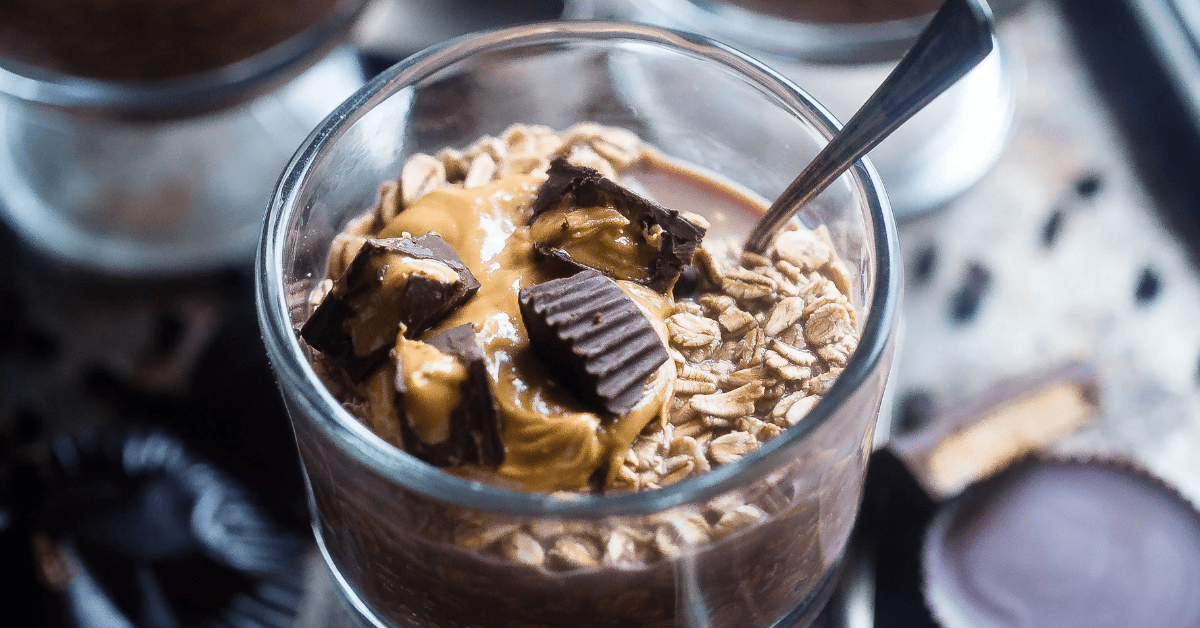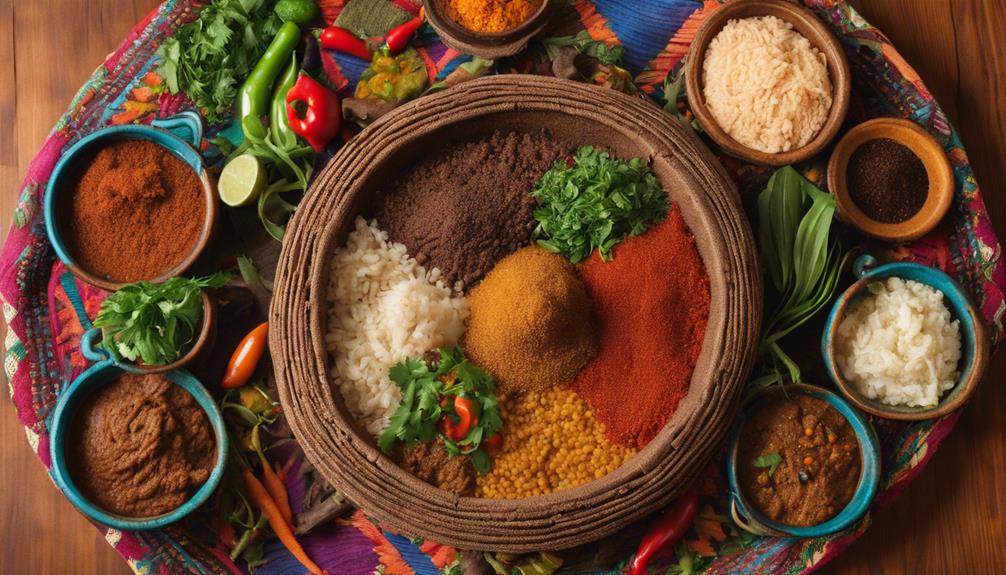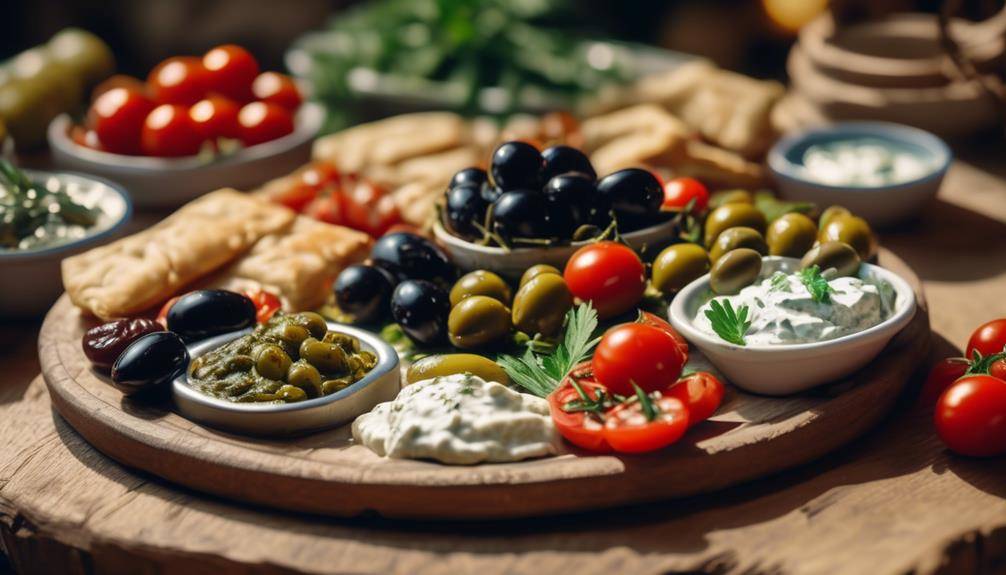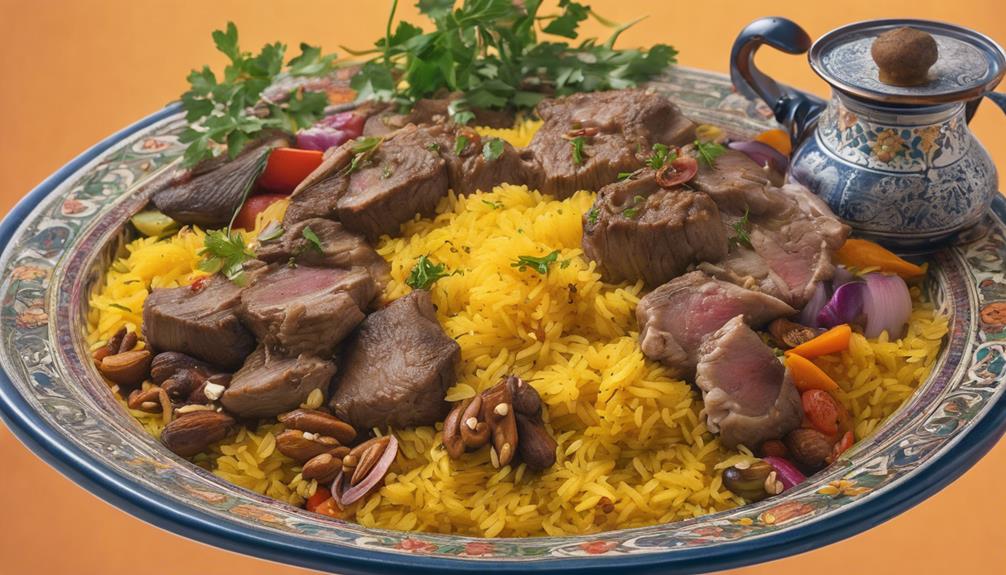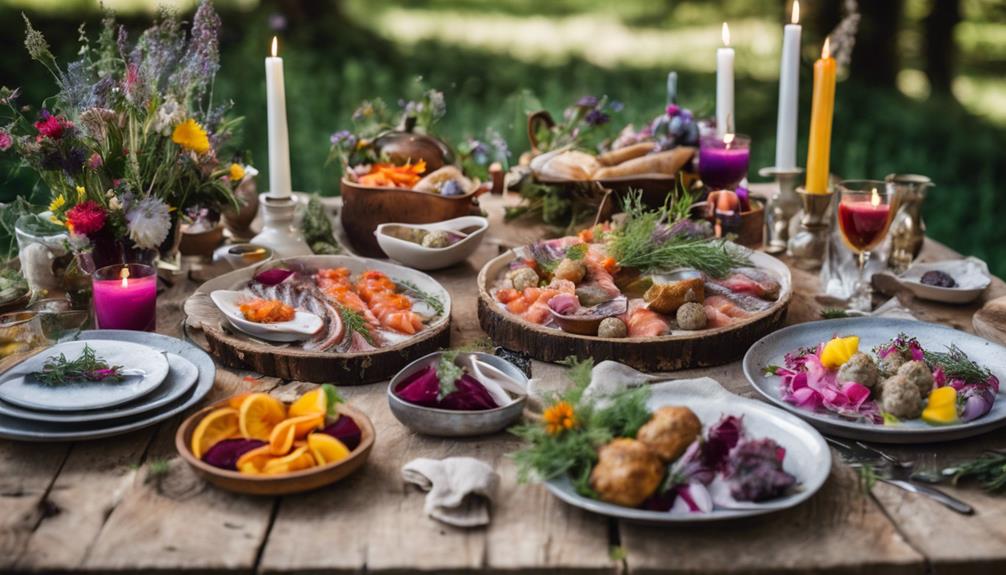Amazing Authentic Spanish Paella Ingredients
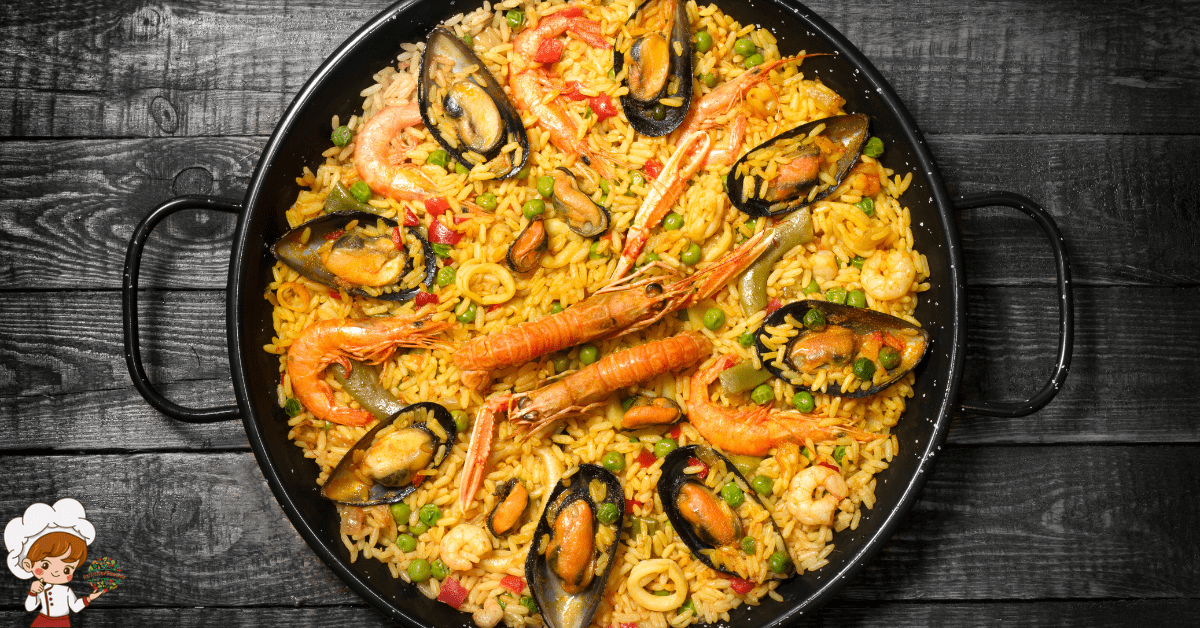
Are you a fan of Spanish cuisine? Have you ever wondered what goes into making an Amazing Authentic Spanish Paella Ingredients? Well, get ready to tantalize your taste buds as we explore the essential ingredients that make this iconic dish so irresistible. From the aromatic saffron to the vibrant green beans, each component plays a crucial role in creating the perfect balance of flavors. But there’s more to it than meets the eye. So, join us on this culinary journey as we uncover the secret behind the tantalizing taste of authentic Spanish paella.
Rice
To create the perfect Spanish paella, you’ll need to start with the key ingredient: rice. Rice is the foundation of this traditional Spanish dish, and it plays a crucial role in achieving the authentic flavors and textures that make paella so special. When it comes to cooking techniques, there are a few key points to keep in mind.
Firstly, the type of rice you choose is essential. Bomba rice is the most common variety used in paella because of its ability to absorb flavors while retaining its shape and texture. Calasparra rice is another popular option, known for its ability to absorb large quantities of liquid without becoming mushy. These varieties are specifically cultivated to enhance the paella experience, providing the perfect balance between tenderness and firmness.
Secondly, the cooking method is equally important. Paella is traditionally cooked in a wide, shallow pan called a paellera, which allows the rice to cook evenly and absorb all the flavors from the other ingredients. The rice is first sautéed with olive oil, onions, and garlic, then simmered with broth, saffron, and various spices. The heat is then reduced to a low flame, allowing the rice to slowly cook and absorb all the delicious flavors.
Saffron
Saffron, a vibrant and aromatic spice, adds a distinctive flavor and golden hue to the Spanish paella, enhancing its complexity and allure. Known as “red gold,” saffron is derived from the delicate stigmas of the Crocus sativus flower. Cultivating saffron requires patience and meticulous attention to detail, as each flower only produces three stigmas, which must be carefully handpicked. This labor-intensive process contributes to the spice’s rarity and high price, making it one of the most expensive spices in the world.
Saffron’s unique flavor profile is earthy, floral, and slightly bitter, with a hint of honey-like sweetness. Its fragrance is captivating, evoking a sense of warmth and exoticism. When added to paella, saffron infuses the dish with a rich and complex taste that cannot be replicated by any other spice.
While saffron is irreplaceable in terms of flavor and aroma, there are some saffron substitutes that can be used in a pinch. Turmeric, for example, can provide a similar golden color to the dish, but lacks saffron’s distinct taste. Other options include annatto powder or safflower, which can mimic the color but not the flavor. However, it is important to note that these substitutes will not capture the essence and complexity that saffron brings to a traditional Spanish paella.
Olive Oil
Olive oil, a key ingredient in Spanish paella, brings a luscious richness and distinctive Mediterranean flavor to the dish. Not only is it a flavorful addition, but olive oil also offers numerous health benefits. Known for its high content of monounsaturated fats, olive oil is a heart-healthy choice that can help reduce the risk of heart disease. It is also rich in antioxidants, which can protect your body against inflammation and oxidative stress.
When it comes to cooking techniques, olive oil is the go-to option for sautéing and frying the ingredients in paella. Its high smoke point allows for a higher cooking temperature without the oil breaking down or producing harmful substances. This ensures that your paella is cooked to perfection, with all the flavors locked in.
To maximize the flavor of the olive oil in your paella, it is important to choose a high-quality extra virgin olive oil. Look for one that has a fruity and robust flavor, as it will enhance the taste of the dish. Drizzle the olive oil over the paella just before serving to add a final burst of flavor and aroma.
In addition to its culinary uses, olive oil has been used for centuries in beauty and skincare routines. Its moisturizing properties make it an excellent natural moisturizer for the skin and hair. It can also be used as a makeup remover or as a base for homemade beauty products.
Onion
To begin, let’s talk about the importance of chopping the onion in preparing Spanish paella. The onion adds depth and flavor to the dish, complementing the other ingredients. Once chopped, you’ll want to sauté the onion until it becomes soft and translucent, releasing its aromatic qualities into the pan. This step is crucial in building the foundation of flavors for a delicious paella.
Chopping the Onion
Before you can start cooking the perfect Spanish paella, you will need to master the art of chopping the onion. The onion is a fundamental ingredient in paella, providing a rich and savory flavor to the dish. To begin, peel the onion and cut off the ends. Slice it in half from top to bottom, and then make vertical cuts, keeping the onion intact at the root end. Finally, make horizontal cuts across the onion, creating small, even pieces.
Chopping the onion finely allows it to cook evenly and release its flavors during the sautéing process. While onion is the traditional choice, you can also experiment with alternative vegetables such as leeks or shallots to add a unique twist to your paella. Mastering the art of chopping the onion is an essential skill for creating an authentic Spanish paella.
Sautéing the Onion
To sauté the onion for your Spanish paella, start by heating a drizzle of olive oil in a large, deep pan. Sautéing the onion brings out its natural sweetness and adds depth of flavor to your dish. Here are some sautéing techniques to enhance the onion flavor profiles:
- Begin by thinly slicing the onion to ensure even cooking.
- Heat the oil over medium heat until it shimmers.
- Add the sliced onion to the pan and stir occasionally to prevent burning.
- Cook until the onion turns translucent and develops a golden brown color.
- The caramelization process will intensify the onion’s sweetness and create a rich, savory base for your paella.
Garlic
Garlic, with its pungent aroma and distinct flavor, adds a bold and savory element to Spanish paella. When it comes to preparing garlic for your paella, mastering the chopping techniques is essential. Start by separating the garlic cloves from the bulb and peel off the papery skin. To chop the garlic, place the flat side of your knife on top of a clove and gently press down with your palm to crush it. This will help release the flavors and oils. Then, finely mince the crushed garlic until it reaches the desired consistency.
Aside from its culinary uses, garlic also offers numerous health benefits. It is known for its immune-boosting properties, thanks to its high content of vitamin C and antioxidants. Garlic has also been shown to have antibacterial and antiviral properties, which can help fight off infections. Additionally, garlic has been associated with reducing blood pressure and cholesterol levels, which can contribute to heart health.
In Spanish cuisine, garlic is a staple ingredient that adds depth and complexity to dishes like paella. Its pungent aroma fills the kitchen as it sizzles in the pan, creating an enticing scent. Once added to the paella, the garlic infuses its distinct flavor into the rice, seafood, and other ingredients, enhancing the overall taste. Whether you prefer a milder garlic flavor or a more pronounced one, the chopping techniques you use will determine the intensity of the garlic’s impact on your paella. So, take your time to finely mince the garlic for a subtle taste or chop it coarsely for a bolder flavor profile. Experiment with different chopping techniques to find the perfect balance for your paella.
Tomatoes
In Spanish paella, tomatoes play a pivotal role in adding a vibrant and tangy flavor to the dish. Their juicy flesh and acidic nature contribute to the overall balance of flavors, enhancing the taste of the other ingredients. Whether used as cherry tomatoes or in the form of tomato sauce, these versatile fruits bring a distinct element to the traditional Spanish dish.
- Cherry tomatoes: These small, plump tomatoes burst with sweetness and provide a burst of freshness to the paella. When cooked, they release their juices, infusing the rice with a delightful tang that complements the savory components.
- Tomato sauce: Made from ripe tomatoes, tomato sauce adds a rich depth of flavor to the paella. Its thick consistency coats the rice grains, creating a luscious texture. The sauce also helps to bind the ingredients together, creating a harmonious blend of flavors.
The combination of cherry tomatoes and tomato sauce in Spanish paella creates a dynamic flavor profile that is both satisfying and refreshing. The tanginess of the tomatoes cuts through the richness of the other ingredients, such as the meats and seafood, while adding a bright and lively note to the dish.
When selecting tomatoes for your paella, opt for ripe and juicy ones. The sweetness and acidity of the tomatoes will intensify during the cooking process, infusing the dish with their vibrant flavors. So, whether you choose to use cherry tomatoes or tomato sauce, be sure to embrace the essence of these essential ingredients in your authentic Spanish paella.
Bell Peppers
Bell peppers, with their vibrant colors and crisp texture, add a burst of freshness and a mild sweetness to Spanish paella. These versatile vegetables come in various shades, including green, red, and yellow, each offering a unique flavor profile that elevates the dish. The charring technique, often used to prepare bell peppers for paella, enhances their natural sweetness and imparts a smoky essence.
When it comes to flavor profiles, green bell peppers tend to be slightly bitter and have a more robust taste. They add a delightful tanginess to the paella, complementing the other ingredients. Red bell peppers, on the other hand, are sweeter and milder, lending a subtle sweetness to the dish. Their vibrant color brightens up the paella and adds visual appeal. Yellow bell peppers strike a balance between the green and red varieties, boasting a slightly sweet flavor with a hint of bitterness.
To prepare the bell peppers for paella, the charring technique is often employed. This involves roasting the peppers over an open flame or under the broiler until the skin blackens and blisters. The charred skin is then removed, revealing the tender flesh beneath. This process not only imparts a smoky flavor but also adds a pleasant smokiness to the paella.
Spanish Paprika
Spanish paprika, known as pimentón, is a flavorful spice that adds depth and a distinctive smoky taste to Spanish paella. Made from dried and ground red bell peppers, Spanish paprika comes in three varieties: sweet, bittersweet, and hot. Each variety has its own flavor profile, allowing you to choose the intensity that best suits your taste.
Here are some key points about Spanish paprika to enhance your understanding of this essential ingredient:
- Flavor profile: Spanish paprika offers a rich, earthy flavor with hints of sweetness and a warm, smoky aroma. It adds a complex and robust taste to paella, elevating the overall flavor profile of the dish.
- Cooking techniques: Spanish paprika is traditionally used in two ways when making paella. First, it can be added to the sofrito, a mixture of onions, garlic, and tomatoes that forms the base of the dish. This allows the paprika to infuse its flavors into the sauce. Second, it can be sprinkled directly onto the rice before adding the broth, giving the grains a vibrant red color and enhancing the smoky taste.
- Sweet, bittersweet, or hot: The choice of paprika variety depends on your personal preference. Sweet paprika offers a mild and slightly sweet flavor, bittersweet paprika adds a touch of bitterness, and hot paprika brings a fiery kick to the dish. Experimenting with different varieties can help you find the perfect balance of flavors for your paella.
- Quality matters: When purchasing Spanish paprika, opt for brands that specialize in producing this spice. Look for labels that indicate origin, such as “Pimentón de La Vera,” which comes from a specific region in Spain known for its high-quality paprika.
- Storage tips: To preserve the flavor and color of your Spanish paprika, store it in a cool, dark place, away from direct sunlight. Make sure the container is airtight to prevent moisture from affecting the spice’s quality.
Chicken
To continue building on the vibrant flavors of your Spanish paella, let’s now explore the succulent addition of chicken to the dish. Chicken is a versatile and popular protein choice for paella, adding a rich and savory element to the overall flavor profile. To enhance the taste of the chicken and infuse it with Spanish flair, consider marinating it beforehand.
A chicken marinade can be made using ingredients such as olive oil, garlic, paprika, lemon juice, and salt. This marinade not only adds depth to the flavor of the chicken but also helps to tenderize it. Allow the chicken to marinate for at least an hour, or even overnight, for maximum flavor infusion.
When it comes to cooking the chicken for your paella, there are a few techniques to consider. One option is to sear the chicken pieces in a hot pan with olive oil until they develop a golden brown crust. This step not only enhances the flavor but also helps to lock in the juices. Another technique is to grill the chicken before adding it to the paella, giving it a smoky charred flavor that complements the other ingredients.
Once the chicken has been cooked, it can be added to the paella during the final stages of cooking. This allows the flavors of the chicken to meld with the other ingredients, creating a harmonious and delicious dish. Whether you choose to use boneless chicken thighs or chicken drumsticks, the addition of chicken to your Spanish paella will take it to new heights of flavor and satisfaction.
Rabbit
Considered a traditional ingredient in Spanish paella, rabbit adds a unique and delicate flavor to the dish. In comparison to chicken, rabbit meat has a more subtle taste that blends beautifully with the other ingredients. Whether you’re preparing a traditional or modern recipe, including rabbit in your paella will elevate the flavors and create a truly authentic experience.
Here are some reasons why rabbit is an excellent choice for your paella:
- Tenderness: Rabbit meat is known for its tenderness, making it a delightful addition to the paella. Its delicate texture allows it to absorb the flavors of the saffron-infused rice and the rich broth, resulting in a melt-in-your-mouth experience.
- Flavor: Rabbit has a unique flavor profile that is slightly sweeter and milder than chicken. This subtle taste complements the vibrant spices and aromatic herbs commonly found in Spanish paella, creating a harmonious balance of flavors.
- Authenticity: Rabbit has been used in traditional Spanish paella recipes for centuries. Including this ingredient in your paella not only adds an authentic touch but also pays homage to the rich culinary heritage of Spain.
- Versatility: Rabbit can be prepared in various ways, allowing you to experiment with different cooking techniques and flavors. Whether you choose to braise, grill, or roast the rabbit before adding it to the paella, you can create a dish that suits your preferences and culinary style.
- Modern twist: While rabbit is a staple in traditional paella recipes, it also works well in modern interpretations. Its subtle taste and tender texture make it an excellent choice for those looking to put a contemporary spin on this classic dish.
Seafood (Mussels, Shrimp, Squid)
Including an array of delectable seafood such as mussels, shrimp, and squid adds a delightful burst of flavor and texture to your Spanish paella. These ingredients are not only delicious but also bring unique cooking techniques and nutritional benefits to the dish.
Mussels are a popular choice for paella due to their tender flesh and briny flavor. They are cooked in the shell, which helps to retain their natural juices and enhance the overall taste of the dish. The mussels should be thoroughly cleaned and debearded before cooking to ensure a clean and enjoyable eating experience. When added to the paella, the mussels release their savory juices, infusing the rice with a rich seafood flavor.
Shrimp, another staple in Spanish paella, adds a touch of sweetness and a firm texture to the dish. They are typically cooked with the shell intact, as this helps to preserve their flavor and prevent them from becoming overcooked. The shrimp should be deveined and seasoned before being added to the paella. As they cook, they turn a vibrant pink color and become tender and succulent, making for a delightful bite.
Squid, with its mild and slightly sweet taste, is a wonderful addition to Spanish paella. It is often sliced into rings or strips and cooked quickly to maintain its tenderness. Squid is a good source of protein and low in calories, making it a healthy choice for your paella. Its delicate flavor pairs well with the other seafood and adds a pleasant contrast to the dish.
Incorporating mussels, shrimp, and squid into your Spanish paella not only adds a variety of textures and flavors but also brings unique cooking techniques and nutritional benefits. These seafood ingredients elevate the dish to a whole new level and make it a truly authentic and delicious Spanish delicacy.
Green Beans
Green beans, also known as string beans or snap beans, bring a fresh and vibrant element to your Spanish paella. These slender and crisp vegetables not only add a pop of color to your dish but also provide a delightful crunch with each bite. When cooked properly, green beans can complement the flavors of the other ingredients in the paella, creating a harmonious balance of textures and tastes.
To make the most of your green beans in your Spanish paella, consider using the following cooking techniques:
- Blanching: This method involves quickly boiling the green beans until they are tender yet still retain their bright green color. Blanching helps to soften the beans while maintaining their fresh taste and vibrant appearance.
- Sautéing: Heat some olive oil in a pan and toss in the green beans. Cook them over medium-high heat until they are slightly charred and have a nice crunch. Sautéing the beans adds a depth of flavor and caramelization to the dish.
- Steaming: Steaming green beans is a healthy and straightforward cooking technique. Place the beans in a steamer basket over boiling water and cook until they are tender. Steaming helps to preserve the nutrients and natural sweetness of the beans.
- Stir-frying: Heat a wok or a large skillet over high heat and add some oil. Toss in the green beans and cook them quickly, stirring constantly. Stir-frying gives the beans a smoky flavor and a satisfying texture.
- Roasting: Preheat your oven to a high temperature and spread the green beans on a baking sheet. Drizzle some olive oil and season with salt and pepper. Roast the beans until they are crisp and slightly caramelized. Roasting intensifies the flavors of the beans and adds a delicious nuttiness.
Artichokes
Artichokes, with their unique shape and tender hearts, bring a distinct flavor and texture to your Spanish paella. These delicious vegetables are a popular ingredient in many traditional Spanish paella recipes. Artichokes add a subtle sweetness and a slightly nutty taste to the dish, enhancing the overall flavor profile. They also contribute a delightful chewiness that complements the other ingredients perfectly.
When it comes to artichoke recipes for Spanish paella, there are several variations you can try. One classic option is to simply quarter the artichokes and add them to the paella along with the other ingredients. This allows the artichokes to cook and absorb the flavors of the dish, resulting in a melt-in-your-mouth experience.
Another popular method is to prepare the artichokes separately before adding them to the paella. This involves trimming the leaves, removing the choke, and sautéing them in olive oil until they become tender and slightly caramelized. This technique brings out the natural sweetness of the artichokes and adds a rich depth of flavor to the paella.
Aside from their delicious taste, artichokes also offer numerous health benefits. They are low in calories, high in fiber, and packed with antioxidants. Artichokes are known to aid digestion, support liver health, and promote heart health. They are also a good source of vitamins C and K, as well as folate.
Lemon
Lemon, with its vibrant citrus flavor and refreshing acidity, adds a bright and zesty element to your Spanish paella. Whether you’re cooking up a traditional chicken paella or experimenting with seafood, a squeeze of lemon juice at the end of the cooking process can elevate the flavors and bring a burst of freshness to your dish.
Here are five reasons why lemon is an essential ingredient for your Spanish paella:
- Enhances the flavors: The tangy acidity of lemon juice enhances the flavors of the other ingredients in your paella, giving them a bright and lively taste.
- Balances the richness: Paella can be a rich and hearty dish, especially when using ingredients like chicken or sausage. The addition of lemon juice helps cut through the richness and adds a refreshing contrast.
- Adds a pop of color: A sprinkle of lemon zest or a squeeze of lemon juice adds a vibrant pop of yellow to your paella, making it visually appealing and appetizing.
- Pairs well with chicken: Lemon and chicken are a classic combination in many recipes, and they work beautifully together in paella. The lemon adds a tangy flavor that complements the savory chicken.
- Inspires creativity: While lemon is a traditional ingredient in Spanish paella, it also opens up possibilities for experimentation. You can try adding different herbs or spices to your lemon-infused paella, creating unique and flavorful variations.
Fresh Herbs (Such as Parsley and Rosemary)
When it comes to fresh herbs in Spanish cuisine, parsley and rosemary are two of the most commonly used varieties. Both herbs bring their own unique flavors and aromas to dishes like paella. While dried herbs can be used as a substitute, fresh herbs offer a more vibrant and fragrant experience, enhancing the overall taste of the dish. So, don’t hesitate to add a handful of freshly chopped parsley and a sprig of rosemary to elevate your Spanish paella to the next level.
Herb Varieties
To enhance the flavors of your Spanish Paella, incorporate a variety of fresh herbs such as parsley and rosemary. These herb varieties not only add a delightful aroma to your dish but also bring out the authentic taste of Spain. Here are some herb options that you can experiment with in your paella:
- Thyme: This herb has a subtle earthy flavor that complements the other ingredients in the paella.
- Oregano: With its slightly peppery and minty taste, oregano adds a refreshing twist to the dish.
- Bay leaves: These aromatic leaves infuse the paella with a subtle, floral flavor.
- Sage: Known for its strong and slightly bitter taste, sage adds depth and complexity to the paella.
- Chives: These mild and onion-like herbs provide a hint of freshness to balance the rich flavors of the dish.
Culinary Uses
Enhancing the flavors of your Spanish Paella with a variety of fresh herbs, such as parsley and rosemary, opens up a world of culinary possibilities. These aromatic herbs not only add a burst of freshness to your dish but also bring out the natural flavors of the ingredients. When it comes to culinary techniques, adding herbs like parsley and rosemary can be done in various ways. You can chop them finely and sprinkle them over the finished paella for a vibrant garnish. Alternatively, you can also incorporate them during the cooking process to infuse the dish with their fragrant essence.
Additionally, different paella variations call for different herbs. For instance, rosemary pairs well with meat-based paellas, while parsley complements seafood-based ones. Experimenting with these herbs will elevate your paella to new heights of flavor and complexity.
Fresh Vs. Dried
Fresh herbs, such as parsley and rosemary, bring an unparalleled vibrancy and depth of flavor to your Spanish paella. When it comes to choosing between fresh and dried herbs for your dish, there are several factors to consider. Let’s compare the flavor of fresh vs. dried herbs:
- Fresh herbs have a brighter, more intense flavor compared to their dried counterparts. The freshness adds a burst of freshness to the paella, enhancing the overall taste.
- Dried herbs, on the other hand, have a more concentrated flavor. They can withstand longer cooking times without losing their potency, making them ideal for slow-cooked paellas.
- Cooking techniques also play a role in determining whether to use fresh or dried herbs. If you’re adding herbs early in the cooking process, dried herbs work well as they release their flavor gradually. Fresh herbs are better added towards the end for a burst of freshness.
Ultimately, the choice between fresh and dried herbs depends on personal preference and the desired flavor profile of your Spanish paella.
Frequently Asked Questions: Amazing Authentic Spanish Paella Ingredients
Can I Substitute Regular Rice for the Specific Type of Rice Mentioned in the Article?
You can substitute regular rice in paella, but it won’t give you the same authentic taste and texture. The best alternative to saffron is turmeric, which adds a similar yellow color and subtle flavor.
Is Saffron Necessary for the Authentic Flavor of Spanish Paella, or Can It Be Omitted?
Saffron is essential for the authentic flavor of Spanish paella. It cannot be omitted, but if you can’t find saffron, you can use turmeric as a substitute. However, it won’t give the exact same taste.
What Is the Best Type of Olive Oil to Use for Spanish Paella?
When it comes to choosing the best olive oil for your Spanish paella, consider brands like La Española or Carbonell. Look for extra virgin olive oil with a robust flavor to enhance the authentic taste of your dish.
Can I Use Any Type of Paprika or Does It Have to Be Specifically Spanish Paprika?
You can use any type of paprika for paella, but using Spanish paprika will give it an authentic flavor. As for rice alternatives, you can try using short-grain rice or even quinoa for a unique twist.
Are There Any Vegetarian Options for Replacing Chicken, Rabbit, or Seafood in the Paella Recipe?
If you’re looking for vegetarian substitutes in paella, there are flavorful alternatives to chicken, rabbit, and seafood. You can try using mushrooms, artichokes, or tofu for a delicious twist. As for saffron, you can experiment with turmeric or paprika.
Conclusion
In conclusion, the authentic Spanish paella is a delicious and vibrant dish that captures the essence of Mediterranean cuisine. The combination of saffron-infused rice, tender green beans, artichokes, and aromatic herbs creates a symphony of flavors that tantalize the taste buds. The use of high-quality olive oil adds a rich and luxurious touch to this traditional recipe. Whether enjoyed as a main course or as a side dish, this paella is sure to transport you to the sunny shores of Spain.




